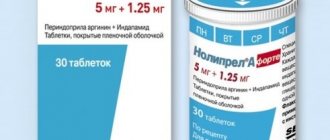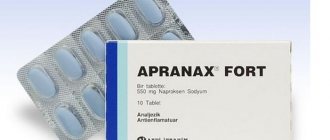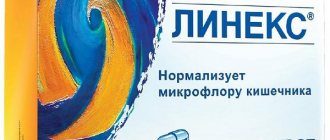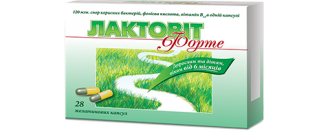Instructions for use NALGESIN FORTE
Side effects can be minimized by using the lowest effective dose for the shortest amount of time needed to relieve symptoms.
Patients with gastrointestinal diseases, especially ulcerative colitis or Crohn's disease (including a history) taking naproxen sodium should be closely monitored by their physician, because the disease may recur or worsen. Serious gastrointestinal adverse reactions can occur without any preexisting medical conditions. As with other NSAIDs, the cumulative incidence of serious adverse reactions, gastrointestinal bleeding or perforation increases linearly with duration of treatment. Taking naproxen sodium in large doses will also likely increase the risk of unwanted effects.
The anti-inflammatory and antipyretic effects of naproxen sodium should be taken into account in infectious diseases, since the drug may mask the signs of these diseases.
Since naproxen sodium and its metabolites are eliminated primarily through the kidneys by glomerular filtration, the drug should be used with great caution in patients with renal failure. In patients with renal failure, CC should be determined and then monitored during treatment. If CC is less than 30 ml/min (0.33 ml/s), the use of naproxen sodium is not recommended.
Caution should be exercised in patients with hepatic impairment. In chronic alcoholic liver disease, and possibly also in other forms of cirrhosis, the total plasma naproxen sodium concentration is reduced, while the plasma concentration of unbound naproxen sodium is increased. It is recommended to take the lowest effective dose.
The risk of stomach bleeding may be higher when taking the drug with alcohol.
Patients with epilepsy or porphyria taking naproxen sodium should be under close medical supervision.
Gastrointestinal disorders
In elderly patients, the incidence of adverse reactions when taking NSAIDs is higher, especially the incidence of gastrointestinal bleeding and perforation, which can be fatal.
Gastrointestinal bleeding, ulceration, or perforation, which may be fatal, has been reported with all NSAIDs at any time during treatment, with or without warning symptoms or a history of serious GI reactions.
The risk of bleeding, ulceration or perforation of the gastrointestinal tract is higher with increasing doses of NSAIDs in patients with a history of ulcers, especially if complicated by bleeding or perforation, and in the elderly. In such patients, treatment should be started with the lowest dose. For patients with a history of ulcers and elderly patients, as well as for patients who require concomitant use of low-dose acetylsalicylic acid or other drugs that increase the risk of gastrointestinal events, combination therapy with protective drugs (eg, misoprostol or inhibitors) should be considered. proton pump).
Patients with a history of GI toxicity, especially the elderly, should report any unusual abdominal symptoms (especially GI bleeding), especially during the initial stages of treatment. Patients receiving concomitant medications that increase the risk of ulceration or bleeding, such as oral corticosteroids, anticoagulants (eg, warfarin), selective serotonin reuptake inhibitors, or antiplatelet drugs (eg, acetylsalicylic acid), should exercise caution.
If gastrointestinal bleeding or ulceration occurs in patients taking Nalgesin® Forte, treatment should be discontinued.
Patients with gastrointestinal diseases (ulcerative colitis, Crohn's disease) should be careful when taking NSAIDs, as their condition may worsen.
Cardiovascular effects
Patients with a history of arterial hypertension and/or heart failure should be careful because There have been reports of fluid retention or edema while taking NSAIDs.
Clinical studies and epidemiological data suggest that the use of some NSAIDs (especially in high doses and during long-term treatment) may cause a slight increase in the risk of arterial thrombosis (myocardial infarction or stroke). Although data suggest that the use of naproxen (1000 mg/day) may be associated with only a minor risk, this risk cannot be excluded.
Patients with uncontrolled hypertension, congestive heart failure, established coronary artery disease, peripheral arterial disease, and/or cerebrovascular disease should carefully consider taking naproxen sodium.
At the beginning of long-term treatment, special attention should be paid to patients with risk factors for cardiovascular disease (eg, hypertension, hyperlipidemia, diabetes mellitus, smoking).
As with other drugs, naproxen sodium should be used at the lowest effective doses in elderly patients.
Naproxen sodium should be avoided for large wounds and for at least 48 hours before major surgery.
Effects on the skin and subcutaneous tissue
NSAIDs may very rarely be associated with serious skin side effects such as exfoliative dermatitis, Stevens-Johnson syndrome and toxic epidermal necrolysis, which can be fatal. Patients are probably at greatest risk for these reactions early in therapy, with reactions occurring in most cases within the first month of treatment. The drug should be discontinued at the first appearance of skin rash, damage to the mucous membranes or any other signs of hypersensitivity.
Kidney failure
NSAIDs that inhibit vasodilatory prostaglandins may lead to renal failure due to a decrease in GFR. This side effect is dose dependent.
At the beginning of treatment or after increasing the dose, it is necessary to monitor diuresis and renal function in patients with the following risk factors:
- elderly age;
- simultaneous use of drugs such as ACE inhibitors, angiotensin II receptor antagonists, diuretics;
- hypovolemia, regardless of the cause;
- heart failure;
- chronic renal failure;
- nephrotic syndrome;
- lupus nephritis;
- decompensated cirrhosis of the liver.
Fluid and sodium retention
Fluid and sodium retention is possible with the possible occurrence of edema, arterial hypertension or worsening of pre-existing hypertension, exacerbation of heart failure. The patient's condition should be carefully monitored at the start of treatment in case of hypertension or heart failure. The antihypertensive effect of drugs may be reduced.
Hyperkalemia
Hyperkalemia is possible, provoked by diabetes or the simultaneous use of potassium-containing drugs. In such cases, regular monitoring of serum potassium concentrations should be carried out.
Other effects
Naproxen inhibits platelet aggregation and may prolong bleeding time in patients. This should be taken into account when determining bleeding time. When taking naproxen, patients who are prone to increased bleeding or who are taking medications that affect hemostasis should be carefully monitored.
Rare cases of ophthalmic side effects have been reported. An ophthalmologic examination is recommended, if deemed necessary by the physician, for patients who experience visual impairment while taking naproxen.
With long-term treatment, systematic monitoring of liver and kidney function and peripheral blood patterns is necessary.
Excipients
1 tablet of Nalgesin® Forte contains 2.18 mmol (50.16 mg) sodium, which should be taken into account in patients on a diet with limited sodium intake.
Use in pediatrics
The drug is not recommended for children and adolescents under 16 years of age.
Impact on the ability to drive vehicles and operate machinery
Nalgesin® Forte does not affect the ability to drive a car or operate machinery.
In case of development of undesirable reactions from the nervous system, such as dizziness, drowsiness, blurred vision, patients should refrain from driving vehicles or operating machinery.
Novalgin® (Novalgin)
Symptoms
: (due to paracetamol) during the first 24 hours after an overdose - nausea, vomiting, pain in the epigastric region, pallor of the skin, loss of appetite. After 1-2 days, signs of liver damage are determined (pain in the liver area, increased activity of microsomal liver enzymes). Possible development of carbohydrate metabolism disorders and metabolic acidosis.
In adult patients, liver damage develops after taking 10 g of paracetamol.
If there are factors that influence the toxicity of paracetamol to the liver, liver damage is possible after taking 5 or more grams of paracetamol. In severe cases of overdose, encephalopathy and coma, acute renal failure with tubular necrosis (including in the absence of severe liver damage), arrhythmia, and pancreatitis may develop as a result of liver failure.
Treatment
: within 1 hour after an overdose, gastric lavage, administration of activated charcoal, and symptomatic therapy are recommended.
The administration of acetylcysteine is most effective during the first 8 hours after an overdose; over time, the effectiveness decreases; if necessary, intravenous administration of SH-group donors and precursors for the synthesis of glutathione - methionine is possible over the next 24 hours after an overdose; treatment of such patients is carried out in a specialized department of liver diseases .
High doses of caffeine cause the following symptoms: headache, tremor, irritability, gastralgia, agitation, restlessness, confusion, tachycardia, arrhythmia, hyperthermia, dehydration, increased tactile and pain sensitivity, frequent urination, headache, nausea, vomiting, sometimes with blood, ringing in the ears, convulsions (in case of acute overdose - tonic-clonic).
Treatment
: gastric lavage, taking activated charcoal, laxatives, for hemorrhagic gastritis - administration of antacids, gastric lavage with ice-cold 0.9% sodium chloride solution, maintaining pulmonary ventilation and oxygenation, for convulsions, intravenous diazepam, phenobarbital, maintaining water-electrolyte balance. It should be borne in mind that the appearance of clinically significant symptoms of caffeine overdose when taking this drug is always associated with severe liver damage caused by an overdose of paracetamol.
Nalgesin Forte
Nalgesin Forte (INN naproxen) is an NSAID. It has anti-inflammatory, analgesic and antipyretic effects. Suppresses the activity of COX group enzymes involved in the synthesis of prostanoids. Inhibits the formation of lipid physiologically active substances prostaglandins from arachidonic acid. Prevents platelets from sticking together. Eliminates pain, incl. arthralgia in a static and dynamic position, stiffness in movements in the morning, swelling in the periarticular area. The anti-inflammatory effect develops within 5-7 days. After oral administration, it is quickly absorbed from the gastrointestinal tract. Peak concentration in the blood is reached after 1-4 hours. The presence of food contents in the gastrointestinal tract slows down absorption, but does not reduce its degree. Almost completely interacts with plasma proteins. Half-life is about 13 hours. Elimination from the body is carried out primarily by the kidneys, and to a much lesser extent by the intestines. The drug is prescribed to relieve pain in rheumatoid arthritis, osteoarthritis deformans, ankylosing spondylitis, and gout. Nalgesin Forte is used for spinal pain, lesions of peripheral nerves characterized by attacks of pain in the area of innervation of a nerve, and muscle pain. The drug is used as an adjuvant therapy for ENT diseases, inflammation of the fallopian tubes and ovaries, cephalalgia, dentalgia, and primary dysmenorrhea. The dose is selected individually depending on the severity of the disease. According to general recommendations, the daily dose is from 500 to 1000 mg. Frequency of application – twice a day. The most common undesirable side effects of Nalgesin Forte are: vomiting (including productive ones), discomfort in the epigastric region, cephalgia, hypersomnia, slow psychomotor activity, skin rashes, urticaria, angioedema. The drug is not used for exacerbations of ulcerative-erosive lesions of the gastrointestinal tract, aspirin-induced bronchial asthma, hematopoietic disorders, severe renal and/or liver failure, individual intolerance to the drug or other NSAIDs.
In pediatric practice, the drug is used after the patient reaches 12 years of age. In patients suffering from mild or moderate renal and/or liver failure, diseases of the gastrointestinal tract (or previously suffered), dyspepsia, hypertension, insufficiency of cardiac muscle function, as well as during the recovery period after major operations, it is necessary to use Nalgesin Forte with extreme caution . During the course of medication, medical monitoring of functional parameters of the liver and kidneys, and laboratory parameters of peripheral blood should be organized. When used together with drugs that reduce acidity and contain magnesium, aluminum and sodium carbonate, the degree of absorption of the active substance Nalgesin Forte is reduced. When used together with drugs that inhibit the activity of the blood coagulation system and prevent thrombus formation, indirect action, a slight potentiation of the effects of the latter is possible. When used together with the semisynthetic antibiotic of the penicillin group, amoxicillin, a clinical case of damage to the glomerular apparatus of the kidneys is described, characterized by generalized edema, massive proteinuria, hypoproteinemia, hypoalbuminemia and hyperlipidemia. Nalgesin Forte weakens the diuretic effect of furosemide. When using the drug together with aspirin, the concentration of the active substance Nalgesin Forte in the blood may decrease. When used together with the benzodiazepine tranquilizer diazepam, the pharmacokinetic parameters of the latter may change. Caffeine potentiates the effects of Nalgesin Forte.
Novalgin tablets 50 mg+200 mg+200 mg 10 pcs.
Paracetamol reduces the effectiveness of uricosuric drugs. The simultaneous use of paracetamol in high doses increases the effect of anticoagulants (decreased synthesis of procoagulant factors in the liver). Inducers of microsomal liver enzymes, ethanol and hepatotoxic drugs increase the production of hydroxylated metabolites of paracetamol, which makes it possible to develop severe intoxications even with a small overdose. Long-term use of barbiturates reduces the effectiveness of paracetamol. When used simultaneously with ethanol, the risk of developing acute pancreatitis increases. Myelotoxic drugs enhance the hematotoxicity of paracetamol. Caffeine is an adenosine antagonist (larger doses of adenosine may be required). With the simultaneous use of caffeine and inducers of microsomal liver enzymes, it is possible to enhance metabolism and increase the clearance of caffeine; inhibitors of microsomal liver enzymes - decreased metabolism of caffeine in the liver. Mexiletine reduces caffeine excretion by up to 50%; Nicotine increases the rate of caffeine elimination. Monoamine oxidase inhibitors, furazolidone, procarbazine and selegiline - large doses of caffeine can cause the development of dangerous cardiac arrhythmias or severe. increased blood pressure. Caffeine reduces the absorption of calcium from the gastrointestinal tract; reduces the effect of narcotic and sleeping pills; increases the excretion of lithium drugs in the urine; accelerates absorption and enhances the effect of cardiac glycosides, increasing their toxicity. Concomitant use of caffeine with β-blockers may; lead to mutual suppression of therapeutic effects; with β-adrenomimetics - to additional stimulation of the central nervous system and other additive: toxic effects. Caffeine may decrease the clearance of theophylline and possibly other xanthines, increasing the potential for additive pharmacodynamic and toxic effects. Propyphenazone may enhance the effect of oral hypoglycemic agents, sulfonamide drugs, anticoagulants, the ulcerogenic effect of glucocorticosteroids, and reduce the effectiveness of potassium-sparing diuretics. Absorption of the components of the drug may be reduced when used simultaneously with cholestyramine, m-anticholinergics, and antidepressants.




